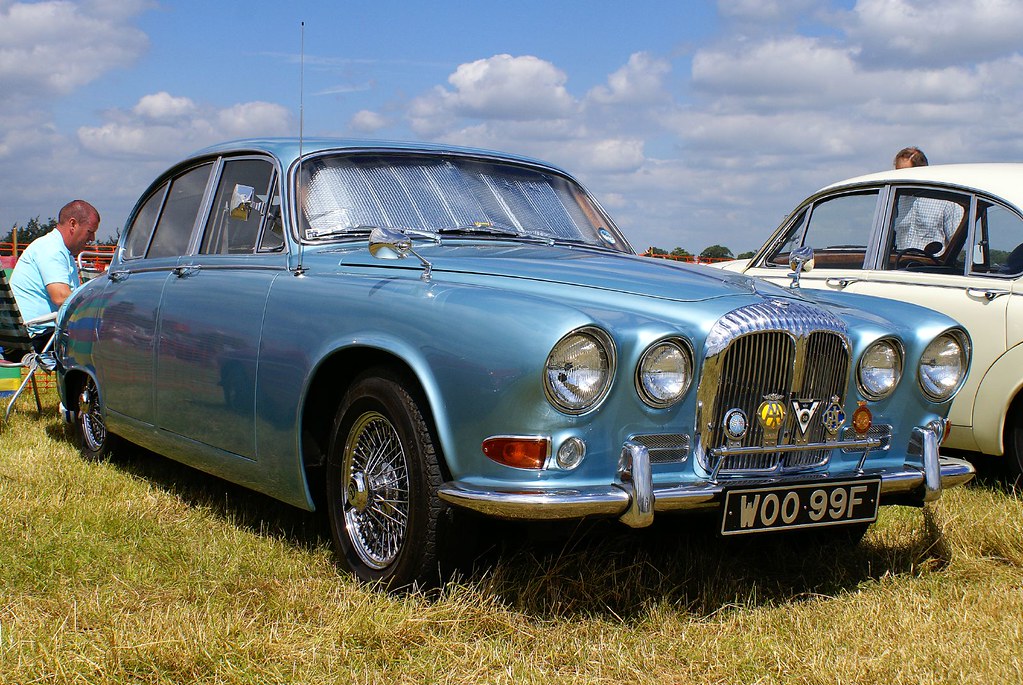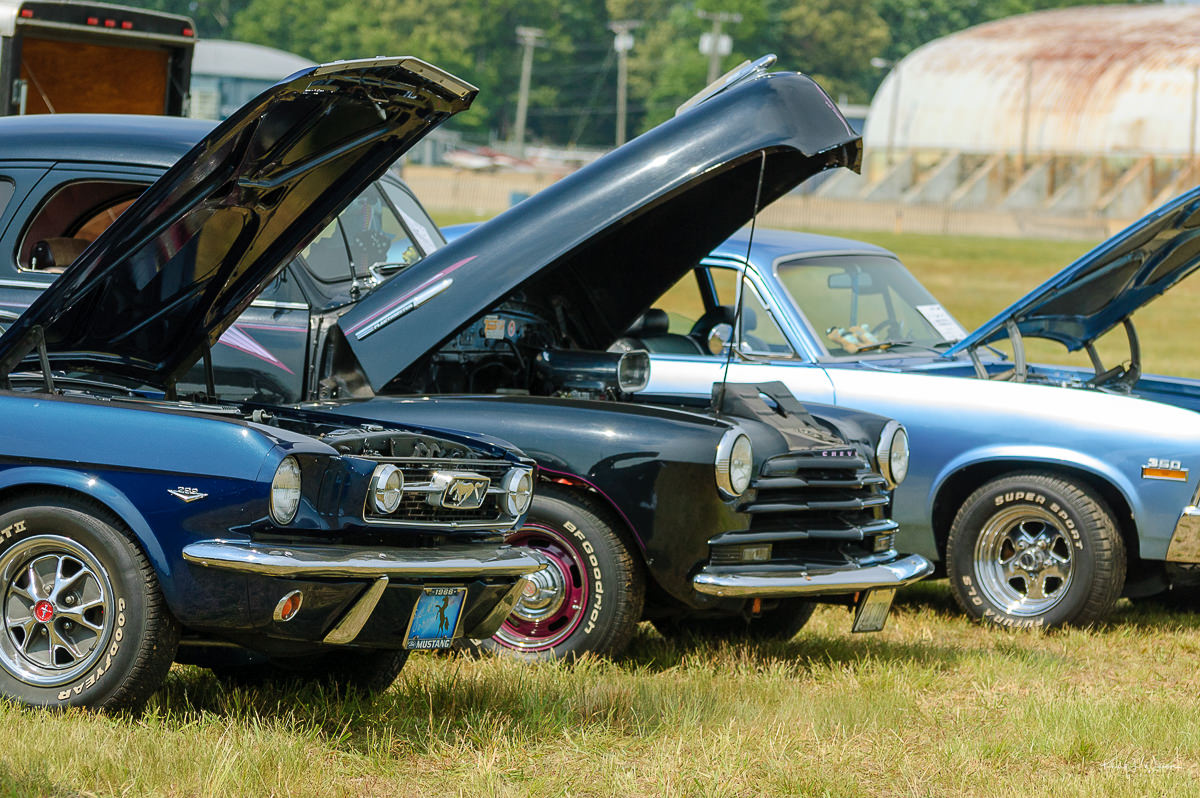
Let’s be real, when the conversation turns to classic American muscle and luxury, your mind probably jumps straight to those roaring V8 beasts of the 60s and 70s. We’re talking about the titans, the legends, the cars that defined an era with their raw power and undeniable presence. Whether it’s Chrysler’s mighty 426 Hemi churning out asphalt-shredding torque in a Plymouth Road Runner or a Dodge Charger, or the iconic Chevrolet Corvette 427, these machines are deeply etched into our collective automotive consciousness. They represent a certain brand of American might and swagger that few cars can ever hope to emulate. But what if I told you there’s another path, a different kind of legend that offers a compelling blend of style, luxury, and a healthy dose of V8 goodness?
You see, the story of American automotive greatness isn’t solely written in quarter-mile times and tire smoke. There’s a parallel narrative, one focused on elegance and personal expression, that truly captured the imagination of a generation. Cars like the classic 1950s Ford Thunderbirds didn’t just drive; they *arrived*. They weren’t about dominating the drag strip; they were about cruising in unparalleled style, establishing an entirely new concept along the way: the personal luxury car. This was a segment born out of a desire for sophistication, for a vehicle that made a statement without needing to shout, and it forever changed the landscape of American automobiles. It proved that you could have power, yes, but you could also have an abundance of comfort and eye-catching design, all rolled into one magnificent package.
And then there was Pontiac. Not content to let others define the segment, Pontiac stepped into this arena with a contender that would leave an indelible mark: the Grand Prix. Debuting in 1962, this wasn’t just another car; it was Pontiac’s definitive answer to the personal luxury movement, a vehicle that embodied both aspiration and capability. While the Grand Prix nameplate famously endured in the Pontiac lineup right up until its unfortunate flop in 2009, making a significant transition from its old-school rear-wheel-drive V8 roots to front-wheel drive in 1988, it’s those earlier iterations that truly capture the heart and soul of what makes this car so special. Specifically, the first three generations – vehicles exclusively powered by classic Pontiac V8 engines – are the ones we’re here to champion today. They represent a golden age, a period when the Grand Prix wasn’t just a car, but a statement. So, buckle up, because we’re about to dive deep into exactly why an old-school Pontiac Grand Prix is more than just a memory; it’s a vibrant, desirable, and absolutely worthy acquisition for any true car enthusiast.
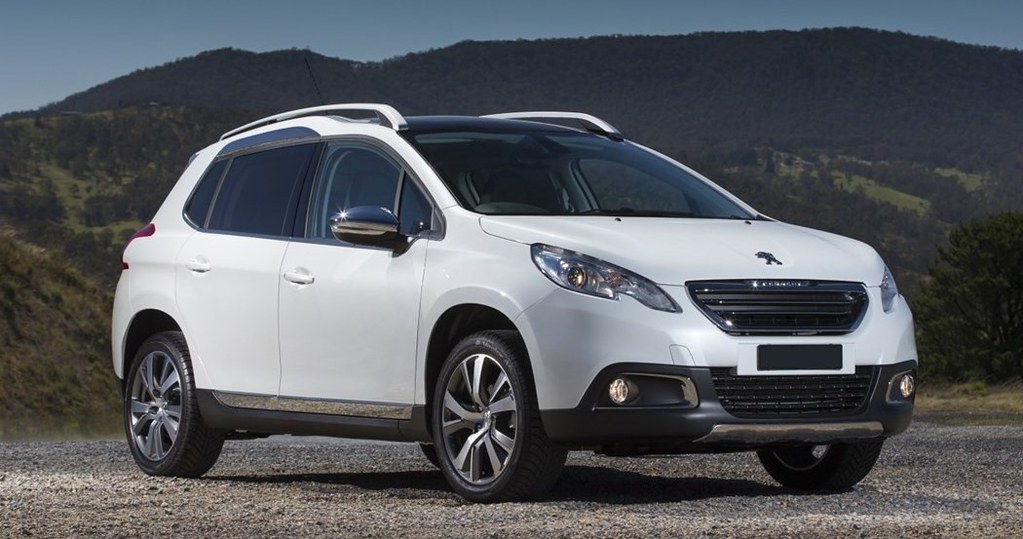
1. **A Pillar of Personal Luxury: The Grand Prix’s Founding Philosophy**From its very inception, the Pontiac Grand Prix was conceived with a clear mission: to offer drivers a sophisticated blend of performance and opulent comfort, distinguishing itself from the brute force approach of many contemporaries. Introduced in 1962, it was designed as a full-sized, luxury-focused vehicle, charting a path that prioritized style and elegance above all. This wasn’t a car for the masses looking for pure speed; it was a car for those who appreciated refinement, a smooth ride, and a commanding presence on the road without sacrificing an ounce of Detroit iron under the hood. It truly embodied the burgeoning concept of the personal luxury car, a segment that promised exclusivity and a premium driving experience for individuals who wanted something a cut above the standard offerings.
The Grand Prix wasn’t just an imitator of the Thunderbird; it was Pontiac’s unique interpretation of what a personal luxury car could and should be. It offered a distinctive blend that was unmistakably Pontiac, setting it apart with its own unique flair and character. This foundational philosophy meant that every aspect of the car, from its expansive interior to its exterior lines, was crafted to exude a sense of upscale appeal and comfort. It invited drivers to enjoy the journey, not just the destination, wrapped in an aura of prestige and thoughtful design.
This focus on luxury and personal enjoyment made the Grand Prix incredibly appealing to a demographic seeking more than just utilitarian transportation. It became a status symbol, a car that reflected the driver’s success and taste. The very essence of its creation as a full-sized, luxury-focused vehicle is a testament to its enduring charm. It speaks to a time when cars were more than appliances; they were extensions of personality, meticulously designed to cater to a specific desire for automotive indulgence. This original intent, deeply embedded in its DNA, is a huge reason why these early models continue to captivate collectors and drivers alike.
Car Model Information: 2025 Alfa Romeo Stelvio Sprint
Name: Pontiac Grand Prix
Caption: 2004–2008 Pontiac Grand Prix
Manufacturer: Pontiac (automobile)
ModelYears: 1962–2008
Class: Personal luxury car
Layout: Front-engine, rear-wheel-drive layout
Successor: Pontiac G8
Platform: unbulleted list
Categories: 1960s cars, 1970s cars, 1980s cars, 1990s cars, 2000s cars
Summary: The Grand Prix is a line of automobiles produced by the Pontiac Division of General Motors from 1962 until 2002 as coupes and from 1989 through 2008 model years as four-door sedans.
First introduced as a full-size performance coupe for the 1962 model year, the model repeatedly varied in size, luxury, and performance over successive generations. The Grand Prix was the most expensive coupe Pontiac offered until the 1970s, when the Bonneville Brougham and the Firebird Trans Am became more exclusive; the Grand Prix moved into the intermediate personal luxury car and later the mid-size market segments.
All Grand Prixs from 1962 through 1972 were pillarless hardtops (except for the 1967 convertible).
Get more information about: Pontiac Grand Prix
Buying a high-performing used car >>>
Brand: Pontiac Model: Grand Prix
Price: $54,000 Mileage: 889 mi.
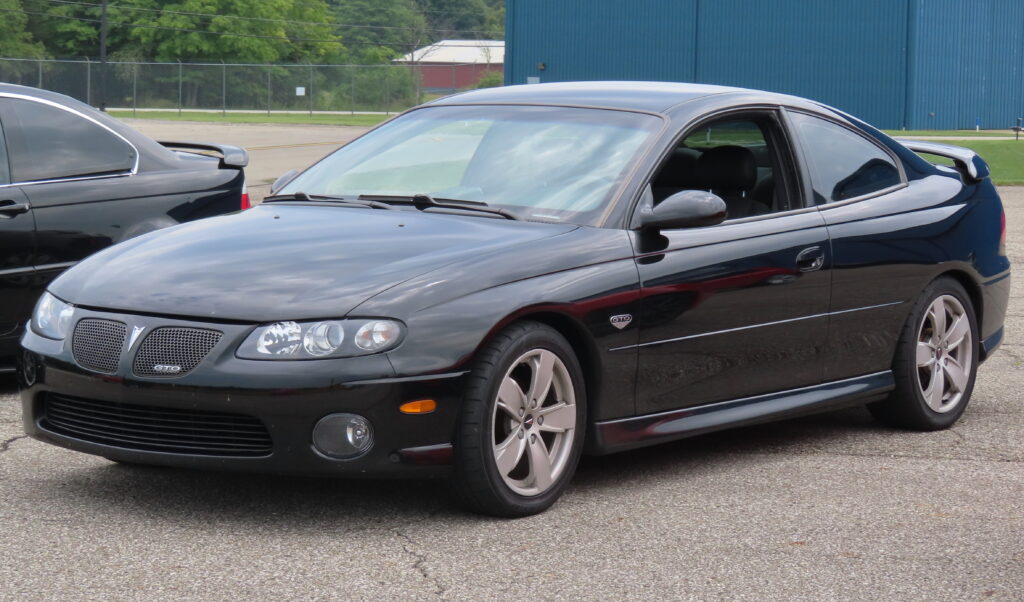
2. **Unleashing Classic Pontiac V8 Power: The Heart of the Beast**When we talk about the ‘old-school’ Pontiac Grand Prix, we’re unequivocally talking about the thunderous heartbeat of a classic Pontiac V8 engine under the hood. This isn’t just a preference; it’s a defining characteristic of what makes these early models so desirable. The context explicitly states, “the first three generations, especially, all of which only came with classic Pontiac V8 engines.” This is the gold standard, the pure, unadulterated experience that true enthusiasts crave. These V8s weren’t just powerful; they were renowned for their torque-rich delivery and distinctive rumble, providing an auditory and visceral experience that modern engines simply can’t replicate.
There’s an undeniable romance associated with these engines. They represent an era of robust, American-made powerplants, engineered to move large, luxurious cars with effortless authority. It’s the kind of power delivery that feels authentic, raw, and deeply satisfying, providing a driving experience that is uniquely classic. Cruising in an early Grand Prix means feeling that legendary V8 pull, hearing its characteristic exhaust note, and knowing you’re commanding a piece of automotive history. This commitment to V8 power in its formative years is a powerful draw for anyone looking to own a genuine piece of the muscle/luxury era.
The consistency of V8 power across the first three generations solidifies their status as the ‘go-to’ models. While later front-wheel-drive Grand Prix models were not necessarily bad, they marked a departure from this core identity. For the purist, for the enthusiast who values the true essence of a classic American car, those initial V8-only years are non-negotiable. They offer the original recipe, the intended driving dynamics, and the authentic spirit of the Grand Prix before the automotive landscape began its inevitable shifts towards smaller displacements and different drivetrain configurations. This unwavering dedication to the V8 engine is a massive reason why these cars remain so coveted today.
Read more about: Unleashed Power: Ranking the 15 Most Dominant ’70s Muscle Cars by Pure Horsepower

3. **Iconic and Timeless Design: A Statement on Wheels**One of the most immediate and compelling reasons to consider an old-school Pontiac Grand Prix is its absolutely stunning and enduring design. This isn’t just a car that aged gracefully; it’s a car that was meticulously styled to be timeless from the start. The context specifically praises its “sleek, sporty design,” highlighting how it quickly gained popularity for its stylish designs. This isn’t hyperbole; the Grand Prix’s aesthetic appeal was, and still is, a major part of its allure, drawing appreciative glances wherever it goes. It possesses a confident, sophisticated elegance that sets it apart, even decades later.
Consider the lines, the proportions, the subtle yet impactful details that define the early Grand Prix models. Whether it’s the crisp, formal roofline of the first generation, the longer wheelbase and more luxurious, elegant design of the second, or the redesigned, more squared-off body with a larger emphasis on luxury in the third, each iteration offered a visual identity that was both distinct and undeniably attractive. These cars don’t scream for attention; they command it with an understated authority, a visual harmony that speaks volumes about the design philosophy of the era. They exemplify a period when automotive styling was an art form, not just an exercise in aerodynamics.
The Grand Prix’s design transcends mere trends; it represents a pinnacle of automotive artistry from its time. It’s a car that looks as good parked at a classic car show as it does cruising down a scenic highway. Its distinctive features and overall silhouette ensure it stands out in a crowd of modern vehicles, offering a refreshing contrast to today’s often-homogenized automotive landscape. For anyone who appreciates genuine automotive beauty and a vehicle that truly makes a visual statement, the Grand Prix’s iconic design alone is a compelling argument for ownership. It’s more than just transportation; it’s rolling sculpture.
Read more about: Beyond the Leash: Unearthing the Fascinating World of Medieval Dogs

4. **A Legacy Etched in Automotive History: More Than Just a Model**The Pontiac Grand Prix isn’t merely a car model; it’s a significant chapter in the rich tapestry of automotive history, a fact that makes ownership even more appealing for enthusiasts. Its journey began in 1962, marking its introduction as a full-sized luxury car. This debut was a pivotal moment, as it carved out a distinct niche for Pontiac within the personal luxury segment, quickly gaining a reputation for its speed and performance despite its luxury focus. It wasn’t just popular; it became beloved, a true icon in the automotive industry.
The continuous evolution of the Grand Prix through its various generations paints a fascinating picture of adaptability and innovation within the brand. From its powerful V8 luxury car roots, it transitioned and updated, with each new generation bringing something unique. The 1970s saw a shift towards a more luxurious and comfortable driving experience, incorporating features like power windows and air conditioning as standard, catering to changing consumer desires for creature comforts. This rich, evolving narrative, culminating in its discontinuation with the Pontiac brand in 2008, means that owning an old-school Grand Prix is like owning a tangible piece of this storied past.
Its status as a ‘highly sought-after car among collectors and enthusiasts’ isn’t just about nostalgia; it’s about recognizing its lasting impact. The Grand Prix holds a special place, not just for its individual merits, but as a representative of Pontiac’s glory days and its contribution to American car culture. It symbolizes an era of bold design, powerful engines, and a unique approach to luxury that has captivated generations of drivers. For those who cherish automotive heritage, the Grand Prix offers a deep connection to a significant period in car manufacturing, providing a compelling historical context that elevates its value beyond mere metal and rubber.
Car Model Information: 2025 Alfa Romeo Stelvio Sprint
Name: Pontiac Grand Prix
Caption: 2004–2008 Pontiac Grand Prix
Manufacturer: Pontiac (automobile)
ModelYears: 1962–2008
Class: Personal luxury car
Layout: Front-engine, rear-wheel-drive layout
Successor: Pontiac G8
Platform: unbulleted list
Categories: 1960s cars, 1970s cars, 1980s cars, 1990s cars, 2000s cars
Summary: The Grand Prix is a line of automobiles produced by the Pontiac Division of General Motors from 1962 until 2002 as coupes and from 1989 through 2008 model years as four-door sedans.
First introduced as a full-size performance coupe for the 1962 model year, the model repeatedly varied in size, luxury, and performance over successive generations. The Grand Prix was the most expensive coupe Pontiac offered until the 1970s, when the Bonneville Brougham and the Firebird Trans Am became more exclusive; the Grand Prix moved into the intermediate personal luxury car and later the mid-size market segments.
All Grand Prixs from 1962 through 1972 were pillarless hardtops (except for the 1967 convertible).
Get more information about: Pontiac Grand Prix
Buying a high-performing used car >>>
Brand: Pontiac Model: Grand Prix
Price: $54,000 Mileage: 889 mi.
Read more about: Inside Eddie Van Halen’s Dream Garage: 15 Iconic Cars Owned by the Rock Legend

5. **The Thrill of Potent Performance Options: V8s with Verve**While often categorized as a personal luxury car, make no mistake, the early Pontiac Grand Prix models packed a serious punch under their elegant bonnets. The context highlights that the first generation (1962-1968) offered a range of engine options, from a 303 cubic inch V8 to a formidable 428 cubic inch V8 with up to 390 horsepower. That’s serious power, folks! This wasn’t just about looking good; it was about having the grunt to back up the sophisticated styling. Imagine a car that could transport you in comfort and style, yet still possess the capability to leave many a contemporary in its rearview mirror.
The second generation (1969-1972) continued this tradition, offering an even larger engine option: a 455 cubic inch V8 with up to 370 horsepower. These aren’t just numbers; they represent the kind of exhilarating performance that defined an era. These engines provided robust acceleration and impressive highway cruising ability, making every drive an event. The engineers at Pontiac clearly understood that even a luxury-focused buyer appreciated a healthy dose of raw power and responsiveness, marrying refinement with genuine performance capabilities.
For enthusiasts, the availability of these potent engine options is a huge draw. It means you’re not just buying a pretty face; you’re acquiring a machine with genuine sporting credentials. The opportunity to own a car with a 428 or 455 cubic inch V8, pushing out nearly 400 horsepower, is a rare treat in today’s automotive landscape. This blend of luxury with significant performance potential makes the old-school Grand Prix a truly unique proposition, appealing to those who desire both comfort and the thrill of substantial V8 power. It’s a testament to Pontiac’s commitment to delivering a complete driving experience, proving that elegance and muscle can indeed coexist harmoniously.
Car Model Information: 2025 Alfa Romeo Stelvio Sprint
Name: Pontiac Grand Prix
Caption: 2004–2008 Pontiac Grand Prix
Manufacturer: Pontiac (automobile)
ModelYears: 1962–2008
Class: Personal luxury car
Layout: Front-engine, rear-wheel-drive layout
Successor: Pontiac G8
Platform: unbulleted list
Categories: 1960s cars, 1970s cars, 1980s cars, 1990s cars, 2000s cars
Summary: The Grand Prix is a line of automobiles produced by the Pontiac Division of General Motors from 1962 until 2002 as coupes and from 1989 through 2008 model years as four-door sedans.
First introduced as a full-size performance coupe for the 1962 model year, the model repeatedly varied in size, luxury, and performance over successive generations. The Grand Prix was the most expensive coupe Pontiac offered until the 1970s, when the Bonneville Brougham and the Firebird Trans Am became more exclusive; the Grand Prix moved into the intermediate personal luxury car and later the mid-size market segments.
All Grand Prixs from 1962 through 1972 were pillarless hardtops (except for the 1967 convertible).
Get more information about: Pontiac Grand Prix
Buying a high-performing used car >>>
Brand: Pontiac Model: Grand Prix
Price: $54,000 Mileage: 889 mi.
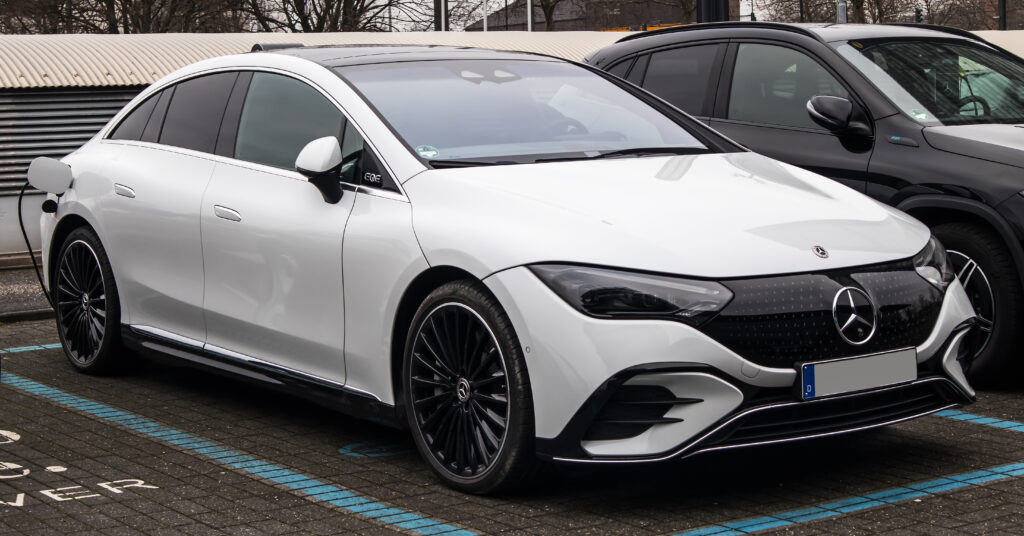
6. **An Evolving Masterpiece Through Early Generations: Unique Character in Each Phase**What’s truly fascinating about the old-school Pontiac Grand Prix is how each of its initial generations brought something distinctly unique to the table, without losing the core essence of the model. This evolution means there’s a Grand Prix to suit a variety of tastes within the classic car spectrum, making the hunt for your perfect model even more engaging. The first generation, spanning from 1962 to 1968, wasn’t just about its powerful V8s; it featured a variety of body styles including a two-door hardtop, convertible, and even a station wagon, offering diverse aesthetic and practical appeals. It was a bold entry, establishing the Grand Prix’s identity with power and versatility.
Moving into the second generation (1969-1972), the Grand Prix saw a deliberate shift towards a more luxurious and elegant design. This iteration featured a longer wheelbase, contributing to a more imposing presence and a smoother ride, and offered that larger, very desirable 455 cubic inch V8. This period saw the Grand Prix mature, becoming even more refined and sophisticated, appealing to those who valued grace alongside power. It solidified its reputation as a personal luxury coupe with an undeniable presence, evolving its aesthetic while retaining its performance pedigree.
The third generation, from 1973 to 1977, represented another significant redesign. This time, the Grand Prix adopted a more squared-off body, emphasizing robust styling and an even greater focus on luxury features. It also introduced another potent option, the Pontiac 400 V8, demonstrating a continued commitment to performance amidst changing design trends. This progressive evolution across its first three generations ensures that while they all share the ‘old-school’ moniker, each offers a unique flavor and historical context. This rich diversity means that diving into the world of vintage Grand Prix ownership is an exploration, not just a purchase, and you’re sure to find a model that speaks directly to your automotive soul.
Alright, so we’ve already covered the intoxicating blend of history, power, and unparalleled style that makes an old-school Pontiac Grand Prix an absolute must-have. But hold onto your hubcaps, because we’re just getting started! The allure of these magnificent machines extends far beyond their initial charm. Now, we’re diving deeper, peeling back the layers to reveal the practical side of owning one of these automotive treasures – from its undeniable market value to the thriving community that embraces it, and the sheer satisfaction of bringing one back to its former glory. Trust me, by the time we’re done, you’ll be hitting up every classic car listing you can find.
Car Model Information: 2025 Alfa Romeo Stelvio Sprint
Name: Pontiac Grand Prix
Caption: 2004–2008 Pontiac Grand Prix
Manufacturer: Pontiac (automobile)
ModelYears: 1962–2008
Class: Personal luxury car
Layout: Front-engine, rear-wheel-drive layout
Successor: Pontiac G8
Platform: unbulleted list
Categories: 1960s cars, 1970s cars, 1980s cars, 1990s cars, 2000s cars
Summary: The Grand Prix is a line of automobiles produced by the Pontiac Division of General Motors from 1962 until 2002 as coupes and from 1989 through 2008 model years as four-door sedans.
First introduced as a full-size performance coupe for the 1962 model year, the model repeatedly varied in size, luxury, and performance over successive generations. The Grand Prix was the most expensive coupe Pontiac offered until the 1970s, when the Bonneville Brougham and the Firebird Trans Am became more exclusive; the Grand Prix moved into the intermediate personal luxury car and later the mid-size market segments.
All Grand Prixs from 1962 through 1972 were pillarless hardtops (except for the 1967 convertible).
Get more information about: Pontiac Grand Prix
Buying a high-performing used car >>>
Brand: Pontiac Model: Grand Prix
Price: $54,000 Mileage: 889 mi.

7. **An Accessible Entry into the Collector Car Market: Real-World Value**Let’s talk brass tacks: what’s the financial picture look like for getting your hands on one of these beauties? The good news is, the Pontiac Grand Prix offers a surprisingly accessible entry point into the classic car market, especially when you consider its pedigree. Our deep dive into countless auction sales reveals that you can typically expect to pay around £17,362 for a Grand Prix in average condition. That might sound like a chunk of change, but when you zoom out, it places it among the most expensive 60% of collector cars across our extensive database. This isn’t some forgotten relic; it’s a car with recognized, tangible value.
What’s even more intriguing is its position within the broader Pontiac family. While it holds its own as a collector, the Grand Prix actually sits on the lower end relative to other Pontiac models. In fact, it typically sells for about £9,114 below the median Pontiac price of £26,476. For the astute enthusiast, this translates to an incredible opportunity. You’re not just buying a piece of automotive history; you’re acquiring a truly iconic model without the eyebrow-raising price tag of some of its brand siblings. It’s a genuine bang-for-your-buck scenario that lets you drive a legend without emptying your entire savings account.
Of course, prices can swing wildly in the collector world. We’ve seen an astounding high of £131,670 for a Grand Prix sold by Mecum in the US back on May 18, 2024. Talk about hitting the jackpot! But on the flip side, the lowest sale ever recorded was a mere £1,377 back in 2006. More recently, since 2020, the lowest recorded price sits at a very palatable £2,137. This wide range means there’s a Grand Prix out there for nearly every budget, whether you’re looking for a pristine show car or a solid project that won’t break the bank. It underscores the model’s versatility in the market and its enduring appeal across various price points.
Car Model Information: 2025 Alfa Romeo Stelvio Sprint
Name: Pontiac Grand Prix
Caption: 2004–2008 Pontiac Grand Prix
Manufacturer: Pontiac (automobile)
ModelYears: 1962–2008
Class: Personal luxury car
Layout: Front-engine, rear-wheel-drive layout
Successor: Pontiac G8
Platform: unbulleted list
Categories: 1960s cars, 1970s cars, 1980s cars, 1990s cars, 2000s cars
Summary: The Grand Prix is a line of automobiles produced by the Pontiac Division of General Motors from 1962 until 2002 as coupes and from 1989 through 2008 model years as four-door sedans.
First introduced as a full-size performance coupe for the 1962 model year, the model repeatedly varied in size, luxury, and performance over successive generations. The Grand Prix was the most expensive coupe Pontiac offered until the 1970s, when the Bonneville Brougham and the Firebird Trans Am became more exclusive; the Grand Prix moved into the intermediate personal luxury car and later the mid-size market segments.
All Grand Prixs from 1962 through 1972 were pillarless hardtops (except for the 1967 convertible).
Get more information about: Pontiac Grand Prix
Buying a high-performing used car >>>
Brand: Pontiac Model: Grand Prix
Price: $54,000 Mileage: 889 mi.
Read more about: Maintenance Shame? 15 High-Cost Vehicles That Make People Pity Your Wallet Immediately

8. **The Savvy Investment: A Wise and Rewarding Acquisition**Beyond the sheer joy of ownership, investing in an old-school Pontiac Grand Prix can genuinely be a smart move. This isn’t just about sentimental value; it’s about holding a tangible asset that has shown resilience and even appreciation in the collector market. The data doesn’t lie: these aren’t cars that depreciate into oblivion. Instead, they offer a blend of passion and potential financial return that’s hard to beat, particularly for an iconic vehicle that’s still relatively affordable compared to its peers.
Think about it: you’re getting a car with a rich heritage, powerful V8 options, and timeless styling – all hallmarks of appreciating classics. While no investment is guaranteed, the historical sales data we possess, compiled from scanning over 30 auction houses and results from over £15 billion of sold cars, provides valuable guidance. Our extensive database allows us to provide guidance on how much you should and shouldn’t be paying, helping you make an informed decision to ensure your Grand Prix isn’t just a beloved car, but a wise financial decision as well. This kind of transparency and data-driven insight is crucial for any savvy buyer looking to enter the classic car market.
The Grand Prix’s consistent presence in auction sales and its sell-through rate indicate a healthy demand. This isn’t a flash in the pan; it’s a model with sustained interest. For those who understand the nuances of the automotive investment landscape, the Grand Prix represents a chance to acquire a significant piece of American engineering and design without the exorbitant price tags of some of its muscle car counterparts. It’s a rewarding investment, not just in monetary terms, but in the sheer enjoyment and prestige that comes with owning such a distinctive and celebrated vehicle.
Car Model Information: 2025 Alfa Romeo Stelvio Sprint
Name: Pontiac Grand Prix
Caption: 2004–2008 Pontiac Grand Prix
Manufacturer: Pontiac (automobile)
ModelYears: 1962–2008
Class: Personal luxury car
Layout: Front-engine, rear-wheel-drive layout
Successor: Pontiac G8
Platform: unbulleted list
Categories: 1960s cars, 1970s cars, 1980s cars, 1990s cars, 2000s cars
Summary: The Grand Prix is a line of automobiles produced by the Pontiac Division of General Motors from 1962 until 2002 as coupes and from 1989 through 2008 model years as four-door sedans.
First introduced as a full-size performance coupe for the 1962 model year, the model repeatedly varied in size, luxury, and performance over successive generations. The Grand Prix was the most expensive coupe Pontiac offered until the 1970s, when the Bonneville Brougham and the Firebird Trans Am became more exclusive; the Grand Prix moved into the intermediate personal luxury car and later the mid-size market segments.
All Grand Prixs from 1962 through 1972 were pillarless hardtops (except for the 1967 convertible).
Get more information about: Pontiac Grand Prix
Buying a high-performing used car >>>
Brand: Pontiac Model: Grand Prix
Price: $54,000 Mileage: 889 mi.

9. **A Thriving Community Awaits: Connecting with Fellow Pontiac Enthusiasts**One of the absolute best perks of owning a classic like the Pontiac Grand Prix isn’t just the car itself, but the incredible community that comes with it. Seriously, if you’re a die-hard Pontiac Grand Prix fan, you’re not alone! There’s a vibrant, passionate network of enthusiasts out there, eagerly waiting to share their love for these iconic cars, swap stories, and maybe even help you hunt down that elusive part you’ve been searching for. It’s about more than just owning a car; it’s about belonging to a family.
Connecting with other Pontiac fans is easier than ever thanks to the magic of the internet. Online communities, whether they’re dedicated forums or lively social media groups, are fantastic places to dive in. You can literally connect with Grand Prix aficionados from all corners of the globe, sharing your experiences, asking for invaluable advice on everything from maintenance tips to restoration techniques, and staying in the loop about upcoming events and gatherings. Plus, these digital hubs are often goldmines for buying or selling parts, or even entire cars, making them indispensable resources for any owner.
But the experience doesn’t stop online. There’s nothing quite like the roar of a V8, the glint of chrome, and the shared camaraderie at a real-life car event. Attending car shows, from local meet-ups to massive national conventions, is an absolute blast and a fantastic way to connect with fellow enthusiasts face-to-face. Imagine showcasing your meticulously maintained Grand Prix, or simply admiring others, while swapping tales of the open road. You can even take it a step further by joining a dedicated Pontiac club or organization, unlocking access to exclusive events tailored specifically for Pontiac owners. It’s a sure-fire way to make new friends, deepen your knowledge, and truly immerse yourself in the Grand Prix lifestyle.
Car Model Information: 2025 Alfa Romeo Stelvio Sprint
Name: Pontiac Grand Prix
Caption: 2004–2008 Pontiac Grand Prix
Manufacturer: Pontiac (automobile)
ModelYears: 1962–2008
Class: Personal luxury car
Layout: Front-engine, rear-wheel-drive layout
Successor: Pontiac G8
Platform: unbulleted list
Categories: 1960s cars, 1970s cars, 1980s cars, 1990s cars, 2000s cars
Summary: The Grand Prix is a line of automobiles produced by the Pontiac Division of General Motors from 1962 until 2002 as coupes and from 1989 through 2008 model years as four-door sedans.
First introduced as a full-size performance coupe for the 1962 model year, the model repeatedly varied in size, luxury, and performance over successive generations. The Grand Prix was the most expensive coupe Pontiac offered until the 1970s, when the Bonneville Brougham and the Firebird Trans Am became more exclusive; the Grand Prix moved into the intermediate personal luxury car and later the mid-size market segments.
All Grand Prixs from 1962 through 1972 were pillarless hardtops (except for the 1967 convertible).
Get more information about: Pontiac Grand Prix
Buying a high-performing used car >>>
Brand: Pontiac Model: Grand Prix
Price: $54,000 Mileage: 889 mi.

10. **Your Restoration Journey: Bringing a Legend Back to Life**So, you’ve decided to take the plunge and snagged yourself a Pontiac Grand Prix. Maybe it’s a pristine example, or maybe it’s a diamond in the rough just begging for some love. If you’re leaning towards the latter, fear not! Restoring a classic Grand Prix, while a daunting task for some, is an incredibly rewarding endeavor, and there’s a wealth of expert advice and resources to help you bring your piece of history back to life. It’s not just about fixing a car; it’s about preserving a legacy.
First things first, a clear plan is your best friend. Before you even think about grabbing a wrench, sit down and map out your vision. What’s your budget? Which parts absolutely need to be replaced or repaired, and which can be lovingly refurbished? What’s the overall look and feel you’re aiming for? A detailed plan will keep you on track and prevent those frustrating detours. Once you have that roadmap, it’s crucial to do your homework and find reputable suppliers for all your parts and materials. Using high-quality components isn’t just about aesthetics; it’s about ensuring the longevity and authenticity of your Grand Prix for years to come.
When it comes to the actual restoration process, patience isn’t just a virtue; it’s a necessity. This isn’t a weekend warrior project; it demands dedication, meticulous attention to detail, and a willingness to learn. Don’t be afraid to seek guidance from other Pontiac enthusiasts – remember that vibrant community we just talked about? Their shared experiences and specific knowledge of the Grand Prix model can offer invaluable tips and tricks. And once your magnificent machine has been restored to its former glory, the journey isn’t over. Regular maintenance, including those essential oil changes, tune-ups, and inspections, will keep your Grand Prix roaring down the road and in top condition, ensuring you enjoy every moment behind the wheel.
Read more about: Seriously Where Did They Go? 6 Legendary Games That Vanished From Arcades: Unearthing the Myths

11. **Navigating the Buying and Selling Landscape: Smart Moves for Enthusiasts**Whether you’re embarking on the thrilling quest to acquire your dream Grand Prix or contemplating parting ways with a cherished one, having the right strategies in your arsenal is key to a smooth and successful transaction. The classic car market has its own quirks, but with a bit of savvy, you can navigate it like a pro. We’ve got you covered with essential tips to ensure you make the best deals and have a hassle-free experience, securing your place in the Grand Prix story.
If you’re in the market to buy, diligent research is paramount. Start by looking up prices for similar models to gauge the market. More importantly, delve deep into the car’s history. Has it been well-maintained? Are there any hidden issues? A thorough inspection of the vehicle is non-negotiable before you make any decisions. Don’t ever be shy about negotiating with the seller – a little respectful haggling is part of the game. And here’s a golden rule: always, always get a detailed contract in writing. This protects both parties and ensures clarity on the terms of sale. Remember, you’re not just buying a car; you’re investing in a legend.
On the flip side, if you’re looking to sell your Pontiac Grand Prix, presentation is everything. Make sure your car is meticulously cleaned and well-maintained to captivate potential buyers – a sparkling ride speaks volumes. High-quality pictures are a must, showcasing your Grand Prix’s best angles and features. Be transparent about the car’s condition; honesty builds trust and avoids headaches down the line. To reach a wider audience, consider attending car events to showcase your vehicle firsthand and connect with other enthusiasts who are always on the lookout for their next classic. Leveraging that passionate community can make all the difference in finding the right buyer who will truly appreciate your Grand Prix.
Car Model Information: 2025 Alfa Romeo Stelvio Sprint
Buying a high-performing used car >>>
Brand: PONTIACO Model: GRAND PRIX
Price: $54,000 Mileage: 889 mi.
Read more about: Seriously What Happened? Unpacking the Perfect Storm That Made Once-Affordable Imported Cars a Distant Memory
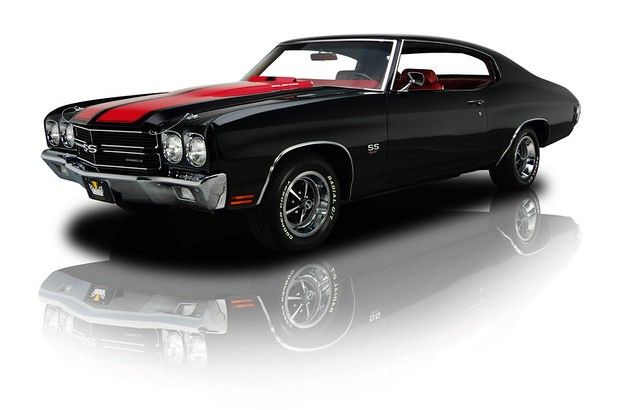
12. **The Enduring Allure: A Timeless Blend of Style, Performance, and Comfort**So, we’ve journeyed through the illustrious history, the roaring V8 power, the iconic design, the vibrant community, and the practicalities of owning an old-school Pontiac Grand Prix. What ties it all together, cementing its status as an undeniable classic that’s still worth buying today? It’s that unique, captivating blend of style, performance, and comfort that few cars, then or now, can truly match. This isn’t just a vehicle; it’s a driving experience, a statement, and a piece of Americana that continues to resonate with car lovers across generations.
The Grand Prix refused to be pigeonholed. It offered the visceral thrill of big-block V8 power without sacrificing an ounce of sophisticated elegance. It pioneered the personal luxury segment, proving that you could have both brute force and refined aesthetics, all wrapped up in a package that was distinctly Pontiac. It was a car that allowed you to cruise in unparalleled style, turn heads with its sleek lines, and still have enough horsepower under the hood to put a grin on your face whenever you hit the gas. This harmonious blend is precisely what gives it its timeless quality, ensuring its appeal never fades.
Car Model Information: 2025 Alfa Romeo Stelvio Sprint
Name: Pontiac Grand Prix
Caption: 2004–2008 Pontiac Grand Prix
Manufacturer: Pontiac (automobile)
ModelYears: 1962–2008
Class: Personal luxury car
Layout: Front-engine, rear-wheel-drive layout
Successor: Pontiac G8
Platform: unbulleted list
Categories: 1960s cars, 1970s cars, 1980s cars, 1990s cars, 2000s cars
Summary: The Grand Prix is a line of automobiles produced by the Pontiac Division of General Motors from 1962 until 2002 as coupes and from 1989 through 2008 model years as four-door sedans.
First introduced as a full-size performance coupe for the 1962 model year, the model repeatedly varied in size, luxury, and performance over successive generations. The Grand Prix was the most expensive coupe Pontiac offered until the 1970s, when the Bonneville Brougham and the Firebird Trans Am became more exclusive; the Grand Prix moved into the intermediate personal luxury car and later the mid-size market segments.
All Grand Prixs from 1962 through 1972 were pillarless hardtops (except for the 1967 convertible).
Get more information about: Pontiac Grand Prix
Buying a high-performing used car >>>
Brand: Pontiac Model: Grand Prix
Price: $54,000 Mileage: 889 mi.
Read more about: 13 Stellar Actors Who Didn’t Deserve Their ‘One-Hit Wonder’ Label – What Happened To Their Epic Careers?
In a world where automotive design can often feel homogenized and the driving experience increasingly digital, the old-school Pontiac Grand Prix stands as a powerful testament to a bygone era. It’s a car that evokes nostalgia, yes, but also delivers a genuinely engaging and satisfying ownership experience right now. Its robust engines, distinctive looks, and comfortable interiors make it a cherished classic that holds a special place in automotive history, and frankly, in the hearts of anyone lucky enough to own or even just admire one. So, if you’re yearning for a slice of automotive legend that offers both soul and substance, look no further. The old-school Pontiac Grand Prix is waiting, and it’s absolutely, unequivocally worth buying today. You won’t regret it.


